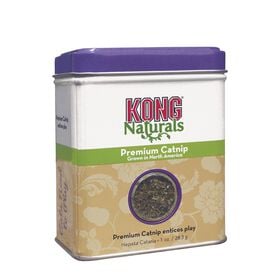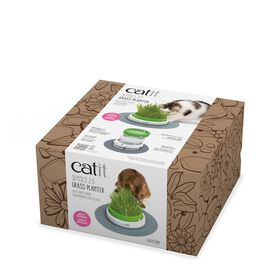Catnip, catwort or catmint . . . Whether or not you are a cat owner, you’ve undoubtedly heard about this mysterious substance that makes cats go crazy. Let’s learn a bit more about this group of plants.
What does it do?
Catnip’s euphoric effect is caused by organic compounds found naturally in certain plants. It is believed that the aromatic volatile molecules mimic a cat pheromone. Pheromones are chemical substances produced by an animal that allows it to communicate with others of its species. Cats use their vomeronasal organ (Jacobson’s organ) to detect the scent. When your cat makes that funny face by curling its lips and inhaling the air through its slightly open mouth, it is using its vomeronasal organ located inside at the top of its mouth.
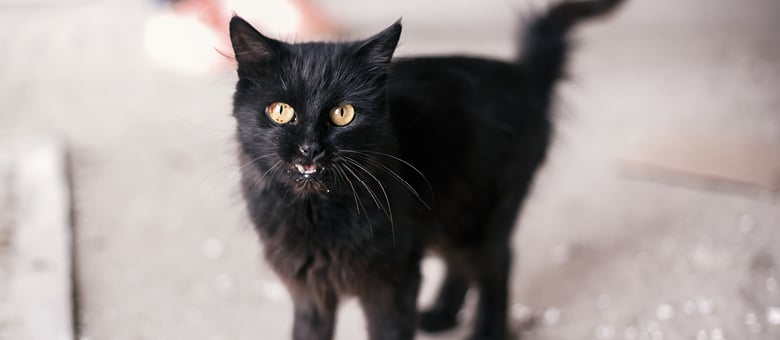
Signals are then sent to two parts of the brain: the amygdala and the hypothalamus, triggering an emotional and hormonal response that often causes hyperactivity. A cat exposed to such active compounds can exhibit behaviour reminiscent of a cat in heat: rolling around, rubbing its head and body frenetically on the plant in question, vocalizing, sniffing or purring intensely. However, this behavioural response is not sexual, especially if your cat has been neutered. Other observable reactions are typical of strong emotions: pupil dilation, salivating, jumping, running, nibbling, hunting behaviour and protecting the supply.
Temporary effect
Regardless of how a cat reacts to it, the behavioural response generally lasts 15 to 30 minutes. Then, the cat becomes temporarily immune to the molecules’ euphoric effect for 20 to 30 minutes. After that, the cat resumes its normal behaviour.
Even though cats may appear to be high (catnip is sometimes referred to as a drug for cats), no addiction has ever been reported. Catnip is completely safe. However, cats can get used to it if they are around it too often. In order for the plant to remain effective, it is best to limit its use. Catnip is a stimulant when the active compounds are sniffed, but when it is ingested, it has sedating effects.
Although catnip usually causes cats to exhibit harmless (and funny) behaviour, some cats have difficulty managing their emotions. They become too excited and can attack other cats. If that is the case, it’s preferable to avoid giving them catnip when other cats are around.
What are these plants with magic molecules?
Different active compounds are derived from different plant species, and their effects are variable.
The most well-known of these plants in the Western world is Nepeta cataria, the famous catnip. A close cousin of the mint used in mojitos, catnip grows very well in areas further south. Its leaves and stems produce an aromatic volatile oil that contains terpenes, including nepetalactones, whose primary role is to defend against plant-eating insects. However, nepetalactones also attract cats.
Catnip is sold in garden centres and is available fresh all summer long. It can also be bought at pet shops in the form of dried herbs or essential oil for vaporizing. Many cat toys also contain catnip in varying amounts. The genus Nepeta is made up of several other plants often found in landscaping arrangements. As a result, they sometimes attract neighbourhood cats! Nepetalactone is also found in tartarian honeysuckle, whose chips are often used to fill cat toys.
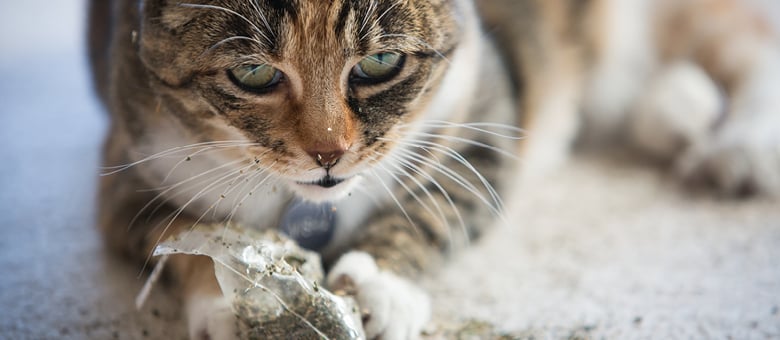
Traditional catnip from the Far East, matatabi (Actinidia polygama), also known as silver vine or cat powder, is becoming increasingly popular in the Western pet market. This Japanese vine similar to the kiwi fruit produces an alkaloid known as actinidine that causes even more striking behaviour in cats than nepetalactone. However, the effects of matatabi on cat behaviour have been studied very little to date. The few studies that have been conducted suggest that most cats prefer matatabi to catnip. Moreover, the effects of matatabi last for around 30 minutes, while they last for only 15 minutes with catnip.
A large number of other plants produce effects similar to catnip but generally to a lesser degree. They include valerian (Valeriana officinalis), cat thyme (Teucrium marum), marsh trefoil (Menyanthes trifoliata), guelder rose (Viburnum opulus), and some species of kiwi fruit (Actinidia spp.).
My cat ignores catnip. Is he normal?
Cats’ response to nepetalactone and other active compounds in catnip is genetically determined. Up to 30% of cats have no interest in catnip and, apparently, approximately 20% to 25% of cats don’t respond to matatabi. Moreover, some cats respond to matatabi, but not to catnip, and vice versa. Age also affects cats’ sensitivity to active compounds. Since sensitivity to the euphoric effects of these plants develops at puberty, it’s normal for cats not to respond before the age of 6 or 7 months.
Did you know that a number of big cat species are also sensitive to catnip? Simba, Tigger, Bagheera and the Pink Panther may also roll around frenetically in catnip plants!
Catnip or cat grass?
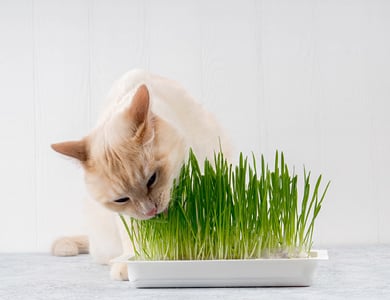
In Europe more than in Quebec, a distinction is made between catnip and cat grass. Catnip is a plant that acts as a stimulant when sniffed. Cat grass (or kitty grass) describes several different types of grass that have no euphoric effect. It satisfies cats’ need for gustatory and tactile stimulation and allows them to safely eat plants since indoor plants are often toxic. Although it is completely safe for cats to eat, cat grass can act as a purgative and cause vomiting. It is therefore recommended that you discuss the matter with your veterinarian before you continue feeding cat grass to your cat.
Now you know everything about buying catnip toys and planting a patch of cat grass which are two great ways to enhance your cat’s environment. Kitty will be crazy about it!


